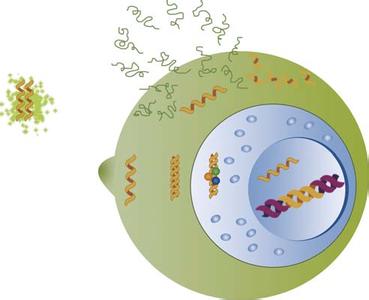PNAS:内源性逆转录病毒图谱翻开病毒进化史新页面
瑞典乌普拉萨大学医学生物化学和微生物学系生命科学实验室Patric Jern研究小组通过绘制内源性逆转录病毒图谱,为进一步认识逆转录病毒和它们的宿主之间进化关系提供证据。相关文章发表于2013年11月25日的《PNAS》杂志上。

PNAS:内源性逆转录病毒图谱翻开病毒进化史新页面
逆转录病毒是一类能够跨越物种障碍感染新宿主的重要病毒,但目前对于它们的进化史所知有限。
所有的逆转录病毒,包括人类HIV,为了生成新病毒都必须先成为宿主细胞基因组的组成部分。当生殖谱系细胞受到感染之时,为将病毒传递给宿主生物体后代提供了条件。数百万年来一些逆转录病毒寄居在脊椎动物宿主体内,以内源性逆转录病毒(ERVs)的形式在宿主的基因组成中留下了一些痕迹。
研究人员采用大型计算机分析,以前所未有的深度揭示了逆转录病毒的多样性,发现了纵贯历史无束缚切换宿主的一组逆转录病毒,存在一个宿主储存库的证据。计算机在横跨脊椎动物多样性取样的60个宿主基因组中鉴别出了近90,000个 ERVs,这使得研究人员有可能绘制出这些病毒的宿主分布、起源及传播。
“我们的研究表明,当前感染逆转录病毒的多样性有可能被低估了,进一步验证了在脊椎动物物种中还有许多其他的逆转录病毒有待发现,”新研究的主要作者Alexander Hayward说。
研究人员通过一组纵贯历史的逆转录病毒发现了它们频繁切换宿主的证据,指出了一个啮齿类动物宿主储存库,大鼠有可能是逆转录病毒跨越各种哺乳动物宿主传播的推动者。
“这项研究表明,基因组记录有潜力成为一种重要的资源,增进我们对于逆转录病毒和宿主之间长期共进化的了解,”Patric Jern说。
ERVs提供的基因组记录扩宽了人们对于过去逆转录病毒传播进化和频率的认识,可以此来评估未来的风险以及不同宿主之间水平传播的限度。鉴于一些重要疾病的出现与宿主由猴种群切换为人类的HIV一类的逆转录病毒感染有关联,新研究具有相关意义。
原文摘要:
Broad-scale phylogenomics provides insights into retrovirus-host evolution
A. Hayward, M. Grabherr, P. Jern
Genomic data provide an excellent resource to improve understanding of retrovirus evolution and the complex relationships among viruses and their hosts. In conjunction with broad-scale in silico screening of vertebrate genomes, this resource offers an opportunity to complement data on the evolution and frequency of past retroviral spread and so evaluate future risks and limitations for horizontal transmission between different host species. Here, we develop a methodology for extracting phylogenetic signal from large endogenous retrovirus (ERV) datasets by collapsing information to facilitate broad-scale phylogenomics across a wide sample of hosts. Starting with nearly 90,000 ERVs from 60 vertebrate host genomes, we construct phylogenetic hypotheses and draw inferences regarding the designation, host distribution, origin, and transmission of the Gammaretrovirus genus and associated class I ERVs. Our results uncover remarkable depths in retroviral sequence diversity, supported within a phylogenetic context. This finding suggests that current infectious exogenous retrovirus diversity may be underestimated, adding credence to the possibility that many additional exogenous retroviruses may remain to be discovered in vertebrate taxa. We demonstrate a history of frequent horizontal interorder transmissions from a rodent reservoir and suggest that rats may have acted as important overlooked facilitators of gammaretrovirus spread across diverse mammalian hosts. Together, these results demonstrate the promise of the methodology used here to analyze large ERV datasets and improve understanding of retroviral evolution and diversity for utilization in wider applications.

